Botanical Names
Clinacanthus nutans
Common Names
| Malaysia | Kitajan, Gendis, Daun Belalai Gajah, Pokok Mulut Buaya |
| English | Sabah snake grass, Drooping Clinacanthus |
| Indonesia | Ki tajam (Sunda); Dandang gendis (Java); Gendis (Central Java) |
| Thailand | Saled pangpon tua mea (Saliva of the female mongoose) |
| Chinese | You Dun Cao, Sha Ba She Cao |
Family
Acanthaceae
Introduction
Belalai gajah originates from Southeast Asia countries and naturally found in Malaysia, Thailand, Vietnam and Indonesia. It is an easy growing plant and is normally planted in kitchen gardens mainly for its medicinal properties.
Morphological Features
Belalai gajah is a tall and erect shrubby herb that can grow up to 1.5 m tall. The stems are segmented, cylindrical in shape, green in colour and densely striate. The leaves are single, opposite to each other and dark green in colour. The leaf blade is lanceolate in shape and measuring about 1-3 cm wide and 8-10 cm long. The flowers are compound, panicle shape with light red petals.
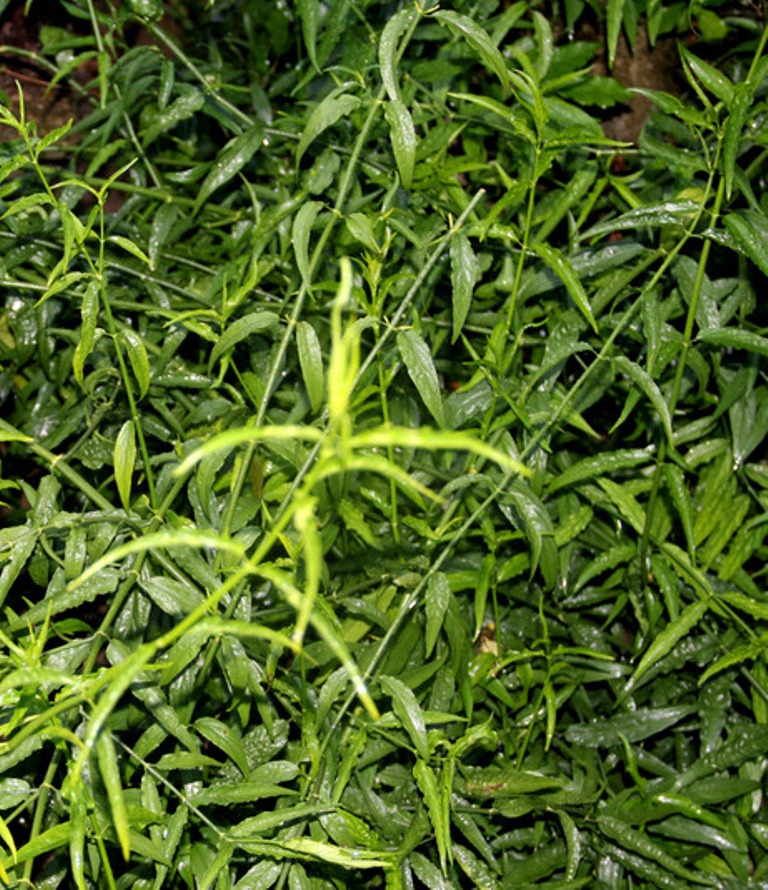
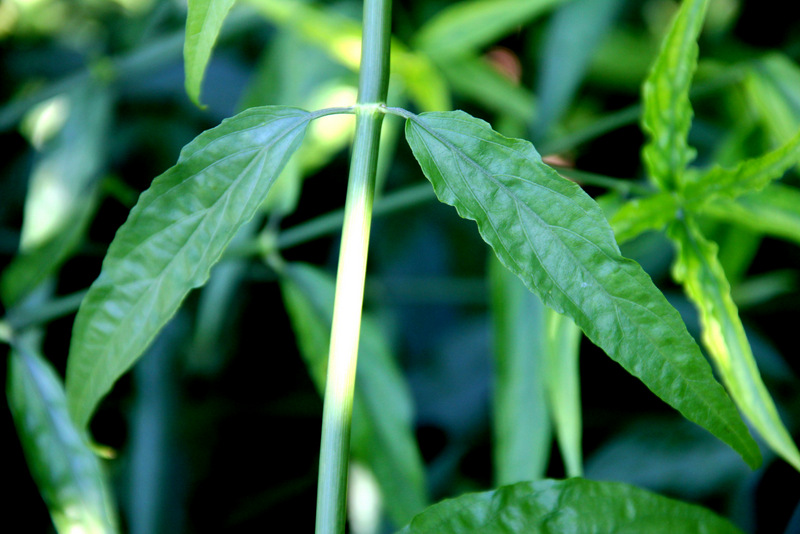
Medicinal Properties and Usage
Belalai gajah is well-known anti-snake venom and insect bites among the traditional healers. It is also being used to treat sprains of injury, rheumatism, dysentery, fever, and regulating menstrual disorders, relieving pains, anaemia, jaundice and diabetes. Recently it is well known for its healing properties for cancer and kidney failures.
Soil Suitability and Climatic Requirement
Belalai gajah is suitable to be planted on most soil types in Malaysia. However it is more preferable on soils with high organic matter content, light textured and well drained. The plant needs an average monthly rainfall of 180-200 cm to grow well. Irrigation should be provided during the dry seasons.
Field Preparation
Land Preparation
Good land preparation is very critical for the early control of weeds and thus for optimum crop growth. The planting area has to be ploughed once with a disc plough at about 1 month before planting followed with rotovator two weeks later. Ground Magnesium Limestone (GML) is applied to increase the soil pH to about 5 – 6.
Production of Planting Materials
Belalai gajah is easily propagated through stem cuttings. The matured stems measuring 15-20 cm long, having 3-4 internodes are used. The young shoot cuttings are ready for field transplanting after 4-5 weeks in the polybags.
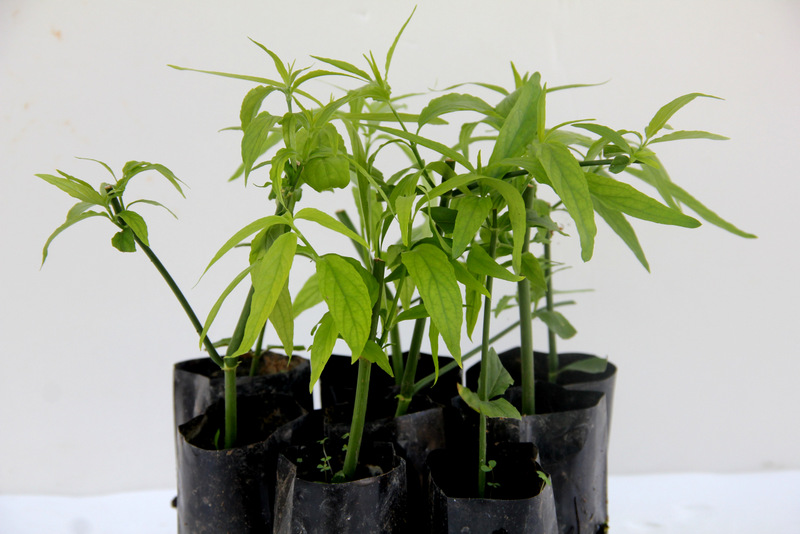
Field Planting
The recommended planting distance is 50 cm between rows x 30 cm within rows. Two rows are recommended for the bed measuring 1.5 wide. This will produce the population density of 66,000 plants/ha. Plastic mulching can be used to control weeds and to ensure that the harvested leaves are free from soil contaminations.
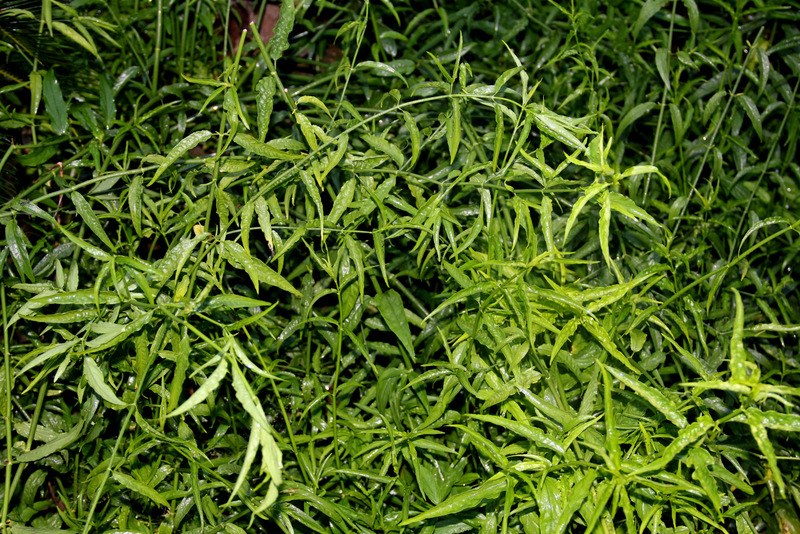
Field Maintenance
Fertilisation
Both the organic and inorganic compound fertiliser is required for the maximum crop growth. The recommended rate of chicken manure is 6 t/ha and given at a week before and subsequently at 6 months intervals. The inorganic compound fertilisers (N:P:K=10:10:10) are given at 4 months interval at the rate of 300 kg/ha. The first application is given at plating.
Weed Control
With the right spacing, the canopy of the fully-grown belalai gajah is very dense and able to control the weeds naturally. Manual weed control is needed only at the early stages of crop growth.
Water Management
Belalai gajah requires adequate water supply for maximum crop growth. Several irrigation systems are available depending on soil types and the water source. If plastic mulch is used, the best irrigation system is drip irrigation. Drip irrigation is easy to handle, cheap and does not need a large water source. For alluvial soils with abundant source, furrow irrigation can be used.
Pest and Disease Control
Generally, there are no serious pests and diseases in the commercial production belalai gajah Good sanitary practices however got to be followed to avoid any possible attack of pests and incidence of diseases.
Harvesting
The first harvest is at 10 weeks after field planting. The shoots are cut at about 30-40 cm from the tip. The recommended harvesting intervals are every 4 weeks. The potential dry yield for 6 harvests is 43 t/ha of fresh leaves.
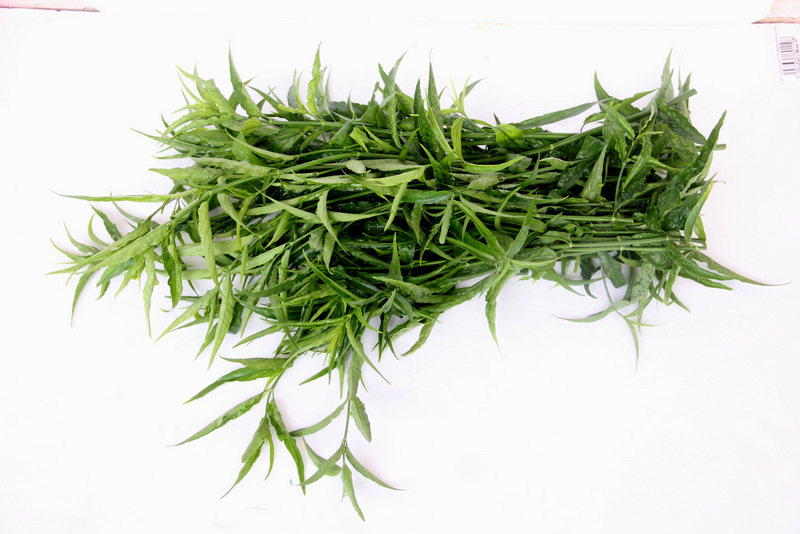
Postharvest Handling
The harvested leaves plant parts should be dried as soon as possible. Commercial oven or commercial tobacco drying barn can be used to dry belalai gajah.The product must be dried to reach a moisture content of 10-12% to maintain the quality and to avoid fungus attack that is prevalent at higher moisture content. At this drying level, the ratio of fresh to dry leaf is estimated to about 6 to 1.
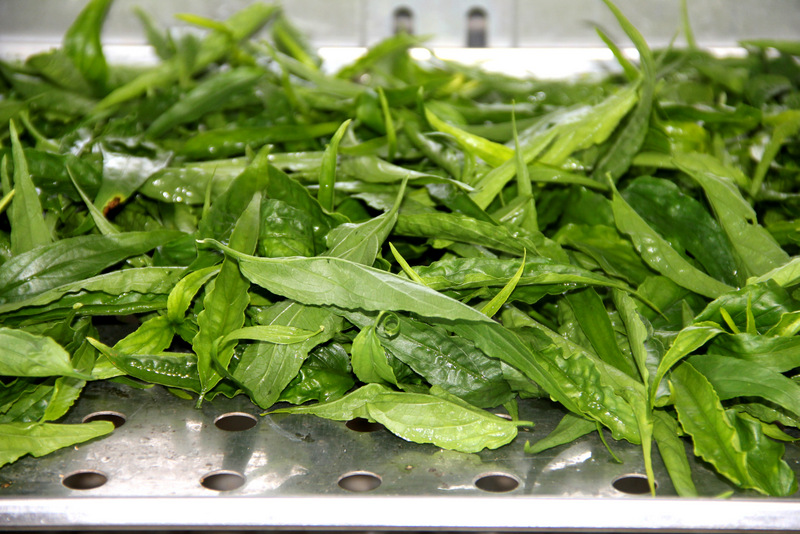

Estimated Cost Of Production
The cost of production per hectare per year (for 6 harvests) is about RM14,000.00. The main components of the cost are the fertilisers, irrigation facilities and labour. With the estimated yield of 43 t/ha fresh and 7 t/ha dry (10 harvests), the production cost for 1 kg of fresh leaf and dried leaves are about RM0.32 and RM2.00 respectively. The production cost was estimated based on the cost of current inputs during writing of this article.
Read More
References
- Lemmens, R.H.M.J. and N. Bunyapraphatsara (Editors) (2003). Plant Resources of Southeast Asia No.12 (3): Medicinal and Poisonous Plants 3
- Musa, Y., Azimah, A.K. and Zaharah, H. (2008). Tumbuhan ubatan popular Malaysia. Serdang: MARDI, pp 214.


